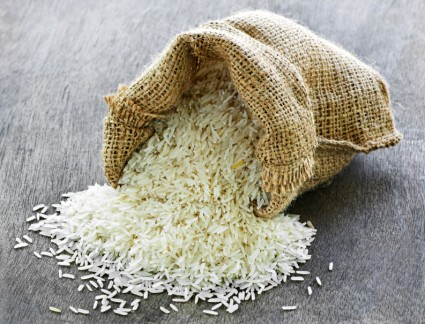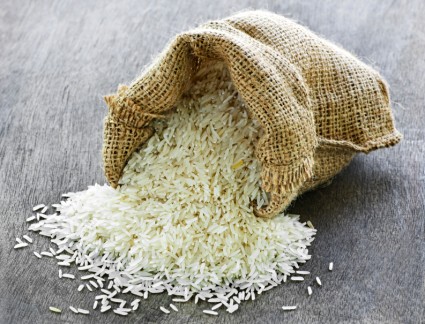 A recent Washington Post article documented the stark reality of Haiti’s non-existent agricultural infrastructure:
A recent Washington Post article documented the stark reality of Haiti’s non-existent agricultural infrastructure:
Decades of inexpensive imports –especially rice from the U.S. — punctuated with abundant aid in various crises have destroyed local agriculture and left impoverished countries such as Haiti unable to feed themselves.
…Today Haiti depends on the outside world for nearly all of its sustenance. The most current government needs assessment — based on numbers from 2005 — is that 51 percent of the food consumed in the country is imported, including 80 percent of all rice eaten.
This phenomenon is not unique to Haiti, of course. The developed world’s approach toward Haiti was replicated across the globe. At long last, however, people outside the NGO world are starting to realize that this strategy was indeed a mistake. In fact, the article contains a startling admission from a surprising source, former President Bill Clinton, on the wisdom of supporting cheap U.S. exports at the expense of developing world farmers:
“It may have been good for some of my farmers in Arkansas, but it has not worked. It was a mistake,” Clinton told the Senate Foreign Relations Committee on March 10. “I had to live everyday with the consequences of the loss of capacity to produce a rice crop in Haiti to feed those people because of what I did; nobody else.”
And yet, while the Obama administration pledged to help developing world farmers feed themselves, he also has pledged to double U.S. exports with agricultural exports a core part of that plan.
American farmers are rightly proud of their ability to grow vast amounts of food. But a desire to do good has been coopted by agribusiness’ interests in expanding and maintaining a subsidy system that causes overproduction and, as Tom Philpott details, primarily benefits large food processors rather than farmers.
I found it interesting, then, to read this article in the New York Times Sunday Magazine about two Louisiana rice farmers who abandoned the conventional commodity agricultural system back in the 90s for the organic, local one.
Fifteen years ago, Kurt and Karen Unkel of Kinder, La., decided the risk [of going organic] was worth it. “I started this because I could not see the future in conventional farming,” Kurt told me when I visited him last month. Back then, he and his brother were farming 2,000 acres. But “it got to where you could plow 100 acres and you wouldn’t find one earthworm.” As he spoke, he turned over the soil in his experimental vegetable garden, sending earthworms squirming back toward the ground. “And as I learned about the nutrition, there just wasn’t no stopping. You’re dealing with life!”
A brown-rice farmer who refers to bugs as “beneficials” sounds like a member of the Michael Pollan order, hippie division. But Unkel is an S.U.V. driver in a baseball cap, Wrangler shirt and mud-caked cowpoke boots. His hands look like parched earth after 30 years of farming. They move a lot as he talks in his Cajun drawl about nutrition, the health of the soil and the benefits of good and bad bugs and bacteria. “I don’t have any Ph.D.’s,” he said after going off on a bacteria jag. “Me and Karen just got four years of college, but they didn’t teach any of this. Like these green manure crops: when I went through school, well, that was old-school. Now it’s back to the new school!
“Local farmers used to think I was nuts, but they’re coming around now,” he said. A decade ago, he was selling 200 pounds of brown rice a month at the Red Stick farmers’ market in Baton Rouge. Now Unkel takes 1,000 pounds of jasmine rice from the grain bin near his house every week and mills it himself using a compact Japanese machine. He and an intern bag it, stamp the Cajun Grain label with the milling date and send it to markets around the state, often to be sold that day.
In some ways, this profile fits a certain journalistic pattern that treasures the oxymoronic — an SUV driving, baseball cap wearing, 50-something Southern farmer who farms sustainably?! Wow!!
But what struck me was the main reason Unkel gave for making the switch:
In the mid-’90s, his uncle made him “a heck of a computer program,” which showed that the higher his yields, the lower his payments from government programs. After seeing his money remain steady no matter what he did, “I started trying to figure out how to get out of this,” Unkel said of conventional farming.
In essence — and this is really really important — the more grain the Unkels grew per acre, the less money they made. Though their government subsidy payments remained steady, increasing their yield increased their costs — more, or more expensive, seed, more pesticides, and more fertilizer. Unkel ran the numbers on his own and confirmed that the whole system turns out to be just the trap that Michael Pollan has been describing for years. In fact, the Unkels are going to grow even less rice this year to avoid selling anything into the money-losing (for them) commodity markets.
Have the Unkels discovered that commodity growers are better off if they, to rephrase Nixon-era USDA Chief Earl Butz’s famous advice to farmers, “Get small and get out” — out, that is, of the commodity market?
In a sense, Haitians and literally billions of people in Africa and Asia have become collateral damage in this misguided struggle to maintain a broken system. Bill Clinton understands the error of his ways, but there are still precious few Karen and Kurt Unkels out there who have come to the same conclusion.
I’d also like to make a point that’s often lost in the debate over farm subsidies. For all the billions that go into propping up ridiculous levels of corn, soy and wheat production, the impact of changes in commodity prices on American wallets is actually surprisingly modest, though you wouldn’t know it to hear the fear-mongering from certain quarters at any mention of subsidy reform. Since Michael Pollan wrote about cheap corn in The Omnivore’s Dilemma back in 2005/6, corn prices have increased on average by over 30 percent. And yet, processed food prices have continued to drop — even meat prices, U.S. production of which hinges on cheap grain, have been relatively stable.
To review: Subsidies have stayed the same. Commodity prices have doubled. Processed food prices have dropped. Even so, farmers still lose money, consumers still don’t get hurt and large food processors make ever more billions in profits. Meanwhile, the developing world can no longer feed itself because — even with all the grain we feed to our livestock, process into sweeteners and additives and pump into our cars and trucks — we still have tons and tons and tons left over, which end up flooding overseas markets and putting already poor farmers out of business.
It seems like the Unkels, along with Clinton, have figured out that industrial agriculture isn’t only unprofitable for anyone whose name isn’t Archers, Daniels or Midland. It’s also turning out to be immoral. When is everyone else going to realize this, too?




